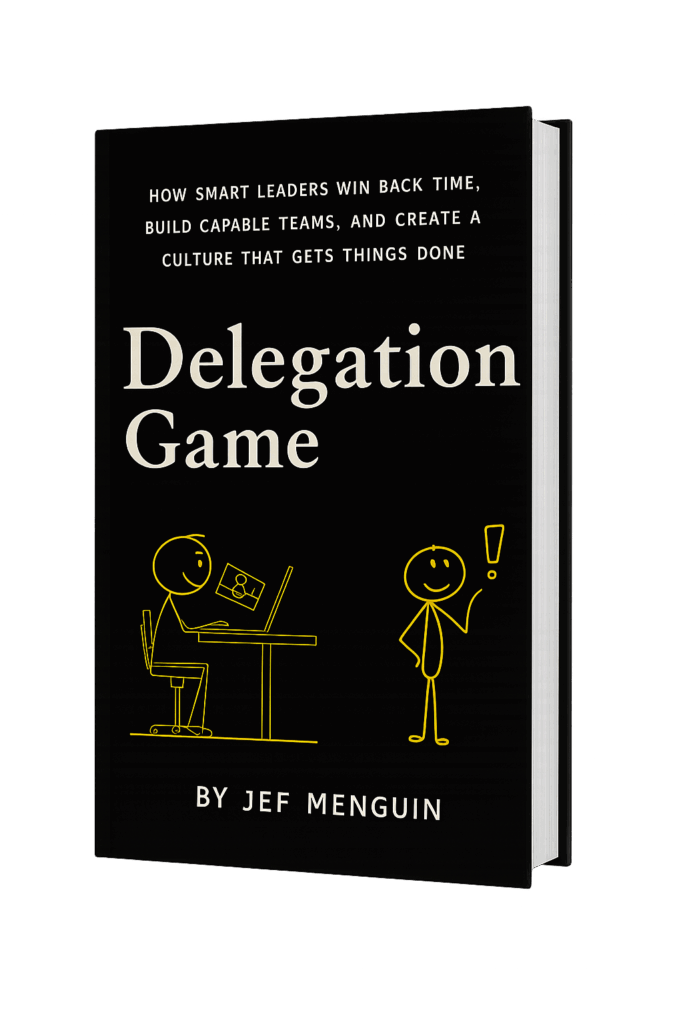Have you ever noticed how some people can turn simple tasks into something amazing? That’s what I mean by “extraordinary.” It’s taking ordinary actions and making them extraordinary.
The Power of Extraordinary
Extraordinary means more than just standing out and making a difference. It also means getting ahead. It’s about turning the “impossible into possible” and making the ideal a reality.
Imagine turning a regular idea into something so unique and valuable that it becomes a “purple cow” – something truly remarkable and unforgettable.
In the workplace, being extraordinary means becoming the Most Valuable Professional. You become the trusted advisor to both your bosses and your subordinates. If you’re in the government, you’re the person who makes Completed Staff Work the norm.1
When I conduct leadership training or team-building workshops, I see how these extraordinary qualities can transform individuals and entire teams.
Think about companies like Jollibee or Ayala – they started with simple ideas and turned them into something extraordinary by focusing on excellence and innovation.
Embracing a Growth Mindset
Before Carol Dweck made the term “growth mindset” famous, we already understood the concept in our local saying: “Kapag gusto, may paraan; kapag ayaw, maraming dahilan.” This captures both growth and fixed mindsets perfectly.
A growth mindset isn’t just about trying again and again until you succeed. It’s about changing your paradigms and thinking bigger – 10x, 100x, or even 1000x.2
In my experience, shifting to a growth mindset means encouraging your team to not just change their methods but also their outlook.
During my workshops, I challenge managers and supervisors to think strategically. It’s not enough to improve incrementally; we need to aim for exponential growth. This shift in thinking can transform managers into a strategic leaders.
Fostering Innovation and Creativity
Innovation and creativity are at the heart of extraordinary results. Create a workspace where people feel safe to share their ideas, no matter how crazy they might seem.
During team-building exercises, I encourage teams to brainstorm without fear of judgment. This often leads to innovative solutions that wouldn’t have come up in a more restrictive environment.
For example, a team I worked with at a local tech company came up with a new customer service strategy that significantly boosted satisfaction rates.
Leading by Example
As leaders, we must model the behavior we want to see. Be a role model – show your team how to work hard and be kind. If you lead with honesty and always do your best, your team will follow.
In value integrity and consistency. When I see a manager demonstrating these qualities, their team naturally steps up their game.
Empowering and Celebrating Teams
Empowerment means giving your team the power to make decisions. Trust them with important tasks and celebrate their successes. This makes people feel valued and motivated.
In one of my keynote speeches, I shared a story about a manager who started recognizing even small achievements during team meetings. This simple act led to a more motivated and engaged team, driving overall success.
Effective Communication
Clear and open communication is essential to achieving extraordinary results. But communication isn’t just about informing; it’s about transforming. That’s the premise of my book, Speak & Change the World.
When I teach public speaking, I help managers see things from the paradigm of their audiences. The goal is to inspire, to get people to “dream the impossible dream,” and to show them how to make their dreams happen.
Every time you stand and speak, you have the opportunity to do something extraordinary.
Resilience and Adaptability
Resilience and adaptability help teams stay strong and move forward, even when things get tough. The pandemic has been a harsh teacher, showing us how fragile life and dreams can be. Yet, we’ve also witnessed incredible resilience.
Companies like Canva emerged as pandemic winners because they adapted and pivoted. And there are many more examples. The truth is that most of our “extraordinary dreams” are already happening somewhere. We need to learn from these examples and apply those lessons to our own challenges.
J.K. Rowling wrote “Harry Potter” when she was struggling, but she believed in her story and kept going. Now, it’s one of the most loved book series in the world.
Another example is Steve Jobs, who started Apple in a garage and turned it into a company that changed the world.
Turning the ordinary into the extraordinary is about believing in yourself and your team, trying new things, and learning from every experience.
Extraordinary isn’t about doing something huge all at once – it’s about making every small action count.
You can make the ordinary extraordinary!
Ordinary People, Extraordinary Results
“Together, ordinary people can achieve extraordinary results.” – Becka Schoettle
Every team starts the same way—ordinary people, each with their quirks, strengths, and flaws. But something magical happens when these individuals come together with a shared purpose. They stop being just ordinary. They become a force.
Let me tell you a story.
Two years ago, a small marketing agency was on the brink of collapse. Their largest client left, competitors were closing in, and morale was low. The team felt like they were running on fumes. Leadership was scrambling, unsure of how to fix the sinking ship. It was the kind of situation where you can see the writing on the wall.
Enter Maria, one of the junior account managers. She wasn’t the loudest voice in the room or the most experienced, but she had something valuable: an idea. “What if we doubled down on content marketing?” she asked one day in a meeting. “We don’t have the biggest budget, but we have creativity. Why not make the most of it?”
It was simple but daring. The team, out of options and low on resources, embraced it. The designers, writers, and account managers—all equally uncertain about the future—rallied behind Maria’s idea. They pulled late nights, tossed around creative concepts, and launched a content strategy that was honest, bold, and authentic.
Within six months, their agency wasn’t just back on track—it was thriving. That content strategy became their flagship service, drawing in new clients who loved their fresh approach. And Maria? She became a leader in her own right, simply because she believed that ordinary efforts, when combined, create extraordinary outcomes.
This is what happens when a team comes together. Success isn’t about having the most talented individual or the best resources. It’s about the team, all rowing in the same direction, putting in consistent effort, and trusting that even when the odds seem stacked against them, they can achieve something remarkable.
In the workplace, it’s easy to forget this. We get caught up in our individual roles, deadlines, and stress. We start to think we’re just one person, and what can one person do, really?
But then something shifts. Maybe it’s a shared goal—a new client, a tight deadline, or a product launch. Suddenly, you’re not just thinking about yourself anymore. You’re thinking about how your work fits with the person sitting next to you. You notice the writer working late on that email campaign, the designer tweaking the logo one last time, the account manager calming a frustrated client.
And then, almost without realizing it, you’ve become part of something much bigger. An ordinary team creating extraordinary results.
So the next time you feel stuck, overwhelmed, or unsure if your contribution matters, remember: no one person changes the world alone. But a team? A team can move mountains.
- Completed Staff Work is a discipline. Those who practice CSW are reliable employees who get things done. ↩︎
- Amazingly, the difference between x and 10x is often just doing a little extra. ↩︎











